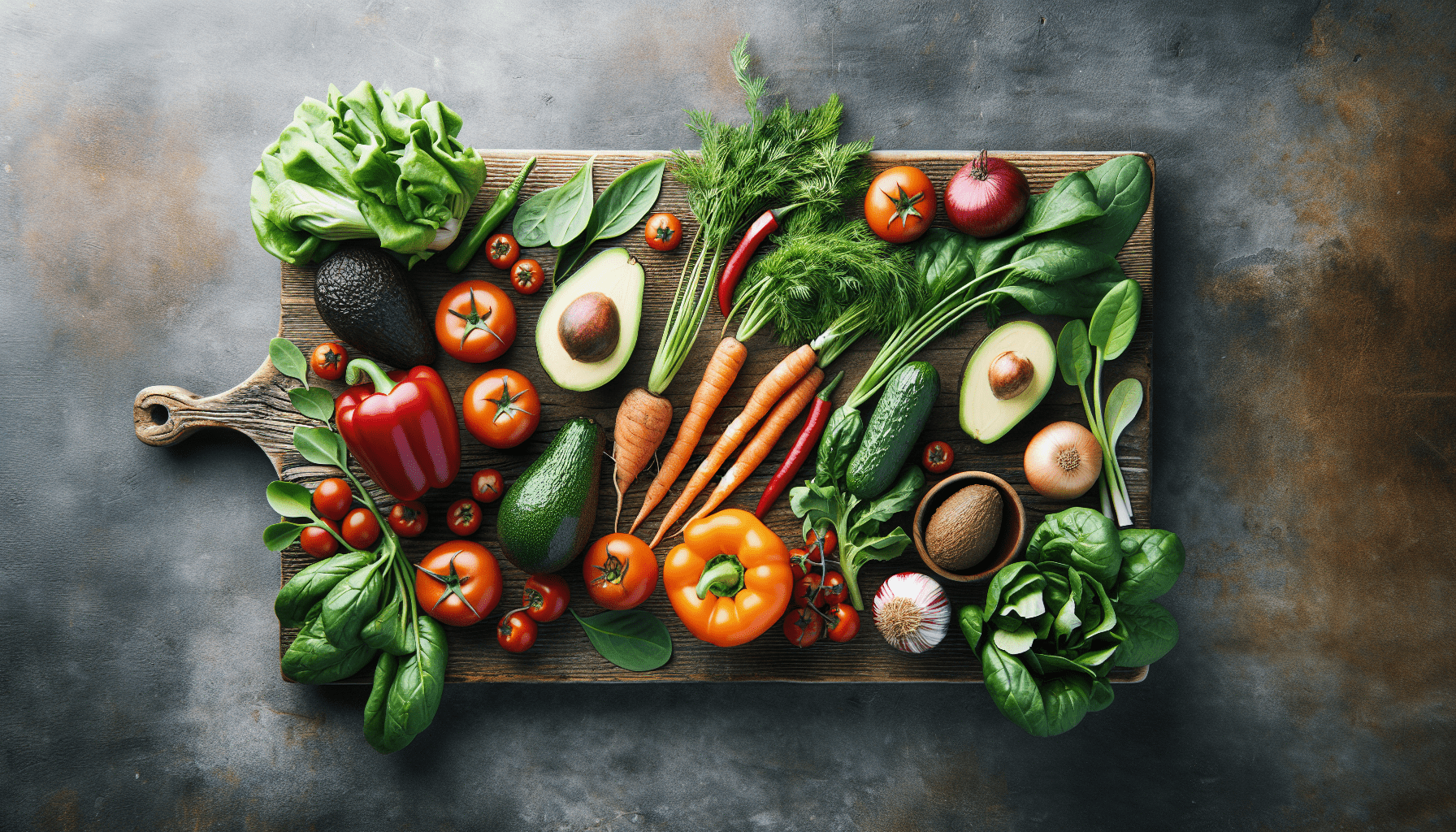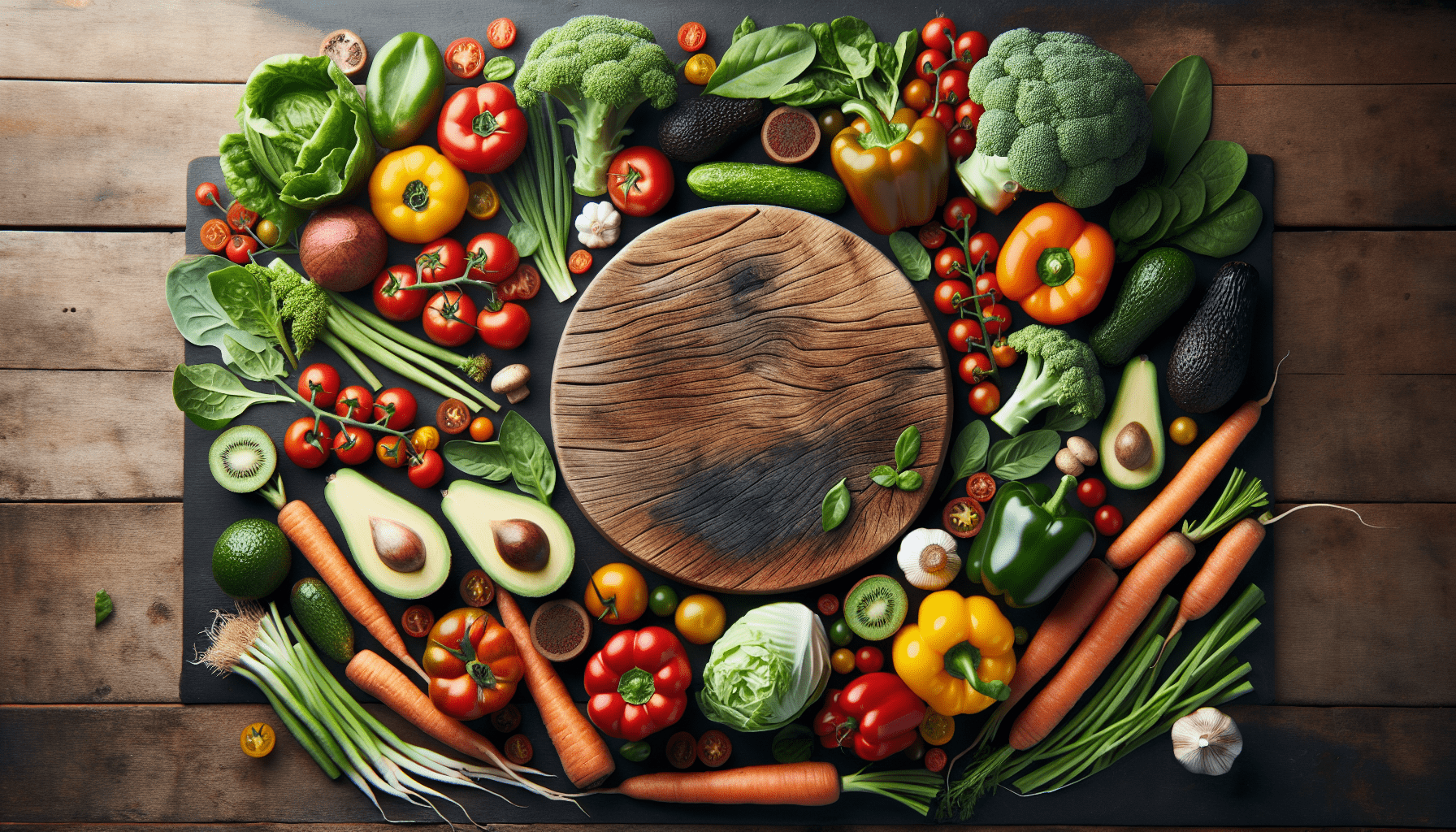Have you ever wondered how we can make our meals more sustainable? With growing concerns about climate change and environmental impact, it’s crucial to adapt our kitchen practices. Creating sustainable recipes doesn’t just help the planet; it also brings a sense of accomplishment knowing we’re contributing positively towards a greener future.
What Is a Sustainable Recipe?
Understanding what makes a recipe sustainable is the first step. A sustainable recipe uses ingredients that have minimal environmental impact. This typically includes local produce, organic foods, and plant-based ingredients. Reducing food waste and utilizing reusable containers also contribute to sustainability.
Why Choose Sustainable Recipes?
Choosing sustainable recipes helps decrease our carbon footprint, conserves natural resources, and supports local farmers. When we make mindful choices about what we cook and how we cook it, we foster a healthier environment for future generations. Plus, many sustainable foods are packed with nutrients and can lead to a healthier diet for us and our families.
Key Principles of Sustainable Cooking
Eat Seasonally and Locally
Eating seasonal and local produce minimizes the need for long transport routes that consume fossil fuels. Seasonal foods are fresher, taste better, and are often cheaper because they don’t have the transportation or storage costs associated with out-of-season produce.
Reduce Meat Consumption
Livestock farming significantly contributes to greenhouse gas emissions. Incorporating more plant-based meals into our diet can drastically reduce our environmental impact. We don’t need to become vegetarians or vegans overnight, but even small changes can make a difference.
Minimize Food Waste
Food waste contributes to methane emissions in landfills. Planning our meals, properly storing leftovers, and becoming creative with scraps can significantly cut down what we throw away.
Opt for Organic and Sustainable Foods
Organic farming avoids synthetic pesticides and fertilizers, which can harm the environment. Sustainable farming practices often focus on preserving soil health and water resources, making organic and sustainably produced foods better choices.

Sustainable Breakfast Recipes
Overnight Oats with Seasonal Fruits
Overnight oats are a delicious, easy, and sustainable breakfast option. They require no cooking, which saves energy, and they can be made with locally sourced fruits.
Ingredients:
- 1 cup rolled oats
- 1 cup plant-based milk (like oat or almond milk)
- Seasonal fruits (e.g., berries, apples, pears)
- 1 tbsp chia seeds
- 1 tbsp honey or maple syrup (optional)
Instructions:
- Mix the oats, milk, and chia seeds in a jar.
- Refrigerate overnight.
- In the morning, top with seasonal fruit and a drizzle of honey or maple syrup if desired.
Vegetable Scramble
Using leftover vegetables is an excellent way to minimize waste while creating a nutritious breakfast.
Ingredients:
- 1 cup assorted leftover vegetables (e.g., peppers, onions, spinach)
- 3 large eggs or tofu for a vegan option
- Salt and pepper to taste
- 1 tbsp olive oil
Instructions:
- Heat olive oil in a pan over medium heat.
- Add the vegetables and cook until they are tender.
- Beat the eggs in a bowl and pour them into the pan, stirring occasionally.
- Cook until the eggs are fully set or the tofu is hot.
- Season with salt and pepper before serving.
Sustainable Lunch Recipes
Quinoa Salad with Local Vegetables
Quinoa is a high-protein grain that’s easier on the environment compared to traditional grains like rice. Pair it with local vegetables for a sustainable and satisfying lunch.
Ingredients:
- 1 cup quinoa, rinsed
- 2 cups water
- 1 cup chopped local vegetables (e.g., cucumbers, tomatoes, bell peppers)
- 1/4 cup olive oil
- 2 tbsp apple cider vinegar
- Salt and pepper to taste
Instructions:
- In a saucepan, bring the quinoa and water to a boil.
- Reduce to a simmer, cover, and cook for 15 minutes or until the quinoa is tender.
- In a large bowl, combine the quinoa and local vegetables.
- Drizzle with olive oil and apple cider vinegar, then toss. Season with salt and pepper.
Chickpea and Spinach Wraps
Chickpeas are a protein-packed, eco-friendly legume. Paired with fresh spinach, these wraps make for a delicious and sustainable lunch.
Ingredients:
- 1 can chickpeas, drained and rinsed
- 2 cups fresh spinach
- 1/4 cup tahini
- Juice of 1 lemon
- Salt and pepper to taste
- Whole wheat tortillas
Instructions:
- Mash the chickpeas in a bowl, leaving some chunks for texture.
- Add in the fresh spinach, tahini, lemon juice, salt, and pepper. Mix until well combined.
- Spread the mixture onto whole wheat tortillas and roll them up.

Sustainable Dinner Recipes
Lentil Bolognese
Replacing meat with lentils in this classic Italian dish reduces the environmental impact while still delivering a hearty and delicious meal.
Ingredients:
- 1 cup dried lentils, rinsed
- 1 large onion, diced
- 2 cloves garlic, minced
- 1 large carrot, diced
- 1 can crushed tomatoes
- 2 cups vegetable broth
- 1 tbsp olive oil
- Salt, pepper, and Italian seasoning to taste
Instructions:
- Heat olive oil in a large pot over medium heat. Add the onions, garlic, and carrot, cooking until tender.
- Add the lentils, vegetable broth, and crushed tomatoes. Season with salt, pepper, and Italian seasoning.
- Bring to a simmer and cook for 30 minutes, or until the lentils are tender.
- Serve over whole-grain pasta or spiralized vegetables.
Stuffed Bell Peppers
Stuffed bell peppers are versatile and can be filled with a variety of seasonal and local vegetables, making them an excellent sustainable dinner option.
Ingredients:
- 4 large bell peppers, tops cut off and seeds removed
- 1 cup cooked brown rice or quinoa
- 1 cup diced seasonal vegetables (e.g., zucchini, carrots, corn)
- 1 can black beans, rinsed and drained
- 1 cup tomato sauce
- 1 tbsp olive oil
- Salt and pepper to taste
Instructions:
- Preheat the oven to 375°F (190°C).
- Heat olive oil in a pan and sauté the diced vegetables until tender.
- In a large bowl, mix the cooked rice, black beans, sautéed vegetables, and tomato sauce. Season with salt and pepper.
- Stuff the bell peppers with the mixture and place them in a baking dish.
- Bake for 30 minutes or until the peppers are tender.
Sustainable Desserts
Seasonal Fruit Crumble
Utilizing seasonal fruits in a crumble reduces environmental impact and provides a delicious end to any meal.
Ingredients:
- 4 cups of seasonal fruits (e.g., apples, berries, peaches)
- 1 cup rolled oats
- 1/2 cup whole wheat flour
- 1/3 cup coconut sugar or brown sugar
- 1/2 cup coconut oil or butter, melted
- 1 tsp cinnamon
Instructions:
- Preheat the oven to 350°F (175°C).
- Spread the seasonal fruit in a baking dish.
- In a bowl, mix together the oats, flour, sugar, melted coconut oil or butter, and cinnamon.
- Sprinkle the oat mixture over the fruit.
- Bake for 30-35 minutes, until the top is golden and the fruit is bubbling.
Avocado Chocolate Mousse
This dessert is a fantastic way to enjoy a creamy, decadent treat while incorporating sustainable and nutritious ingredients like avocados.
Ingredients:
- 2 ripe avocados
- 1/4 cup cocoa powder
- 1/4 cup maple syrup or honey
- 1 tsp vanilla extract
- Pinch of salt
Instructions:
- In a blender or food processor, combine all the ingredients.
- Blend until smooth and creamy.
- Chill in the refrigerator for at least two hours before serving.

Tips for Sustainable Cooking
Plan Your Meals
Meal planning reduces food waste and encourages the use of all the ingredients we buy. By drawing up a weekly meal plan, we can ensure we use ingredients efficiently and prevent unnecessary waste.
Buy in Bulk
Purchasing ingredients in bulk reduces packaging waste and often saves money. Focus on items like grains, nuts, and dried fruits, which have a long shelf life.
Use Reusable Containers
Storing food in reusable containers helps cut down on single-use plastics. Glass jars and stainless steel options are durable and eco-friendly.
Compost Scraps
Composting is a great way to dispose of food scraps that can’t be used. It reduces landfill waste and creates rich soil that can be used for gardening.
The Environmental Impact of Our Food Choices
Understanding Carbon Footprint
Every stage of food production, from growing and harvesting to processing and transporting, generates greenhouse gases. The carbon footprint of our food can be significantly reduced through mindful consumption.
Sustainable Agriculture Practices
Supporting sustainable agriculture practices such as crop rotation, agroforestry, and organic farming helps maintain healthy ecosystems and reduces dependence on synthetic inputs.
Reducing Water Usage
Choosing foods that require less water to produce, like lentils and beans, helps conserve this precious resource. Additionally, growing some of our own food can have a substantial positive impact on our water footprint.

Benefits of Sustainable Eating
Health Benefits
Sustainable foods are often fresher, less processed, and devoid of harmful chemicals, leading to a healthier diet. Eating a variety of plant-based foods ensures we receive a wide range of nutrients.
Economic Benefits
Buying local produce supports local economies and reduces the cost associated with long-distance transport. It also promotes biodiversity and helps local farmers thrive.
Community Building
Participating in farmers’ markets and community-supported agriculture (CSA) programs strengthens bonds within our communities. It fosters a collective effort towards sustainability and encourages more eco-friendly habits.
Common Sustainable Ingredients
| Ingredient | Sustainable Benefit |
|---|---|
| Lentils | Low water and carbon footprint, high in protein |
| Quinoa | Requires less water and is adaptable to different climates |
| Seasonal Fruits | Reduces transportation emissions, fresher and more nutritious |
| Chickpeas | Fix nitrogen in the soil, reducing need for synthetic fertilizers |
| Spinach | Grows quickly and provides high nutritional value |
| Avocados | Nutrient-dense, though mindful sourcing is crucial |
| Bell Peppers | Can be grown locally in many regions, versatile in recipes |

Our Role in Promoting Sustainability
We play a vital role in promoting sustainability through our food choices. By opting for sustainable recipes and ingredients, we’re making a stand for the environment. Every small action contributes to a larger impact, paving the way for a brighter, greener future. Let’s embrace this journey together, delighting in the flavors and benefits of sustainable eating.
Our world is beautiful, and so is our ability to protect it. Through thoughtful, sustainable cooking, we nourish not just our bodies, but also our planet. So next time someone asks, “What are some sustainable recipes?” we’ll have not just answers but stories of delightful, eco-friendly meals to share.



